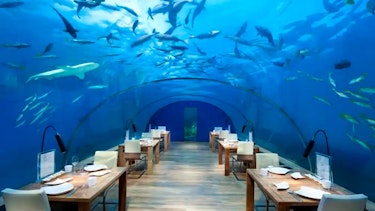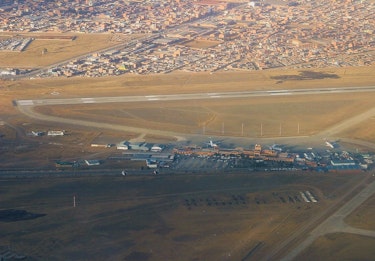In cold climates, architects must navigate the perils of sub-zero temperatures, icy winds, and heavy snow loads. Conversely, hot climates demand solutions to intense heat, arid conditions, and extreme sunlight. In maritime environments, the challenges shift to dealing with the corrosive effects of saltwater, the immense pressure of underwater depths, and the need for structures to coexist harmoniously with marine ecosystems. Highland regions, with their thin air, intense solar radiation, and often treacherous terrain, require yet another set of specialized architectural approaches.
Each of these environments calls for innovative design strategies and resilient materials that can endure the elements while providing functional and aesthetically pleasing spaces. This pursuit of architectural excellence in extreme conditions not only showcases human ingenuity but also enhances our understanding and appreciation of these unique landscapes.
1. Architectural Marvels in Cold Climates
Designing structures in cold climates requires an intricate balance between durability, energy efficiency, and comfort. The Antarctic region, one of the coldest places on Earth, presents a unique set of challenges. Notable examples of architecture in such environments include:
The Halley VI Research Station
Designed by Hugh Broughton Architects, this modular structure is perched on hydraulic legs that can be adjusted to avoid snow accumulation. The station's innovative design ensures that it can withstand temperatures as low as -56°C while providing a safe and comfortable environment for researchers. Each module is interconnected, providing a cohesive yet flexible living and working space that can be easily reconfigured or relocated if necessary.

Credit: The Architectural Review
The Svalbard Global Seed Vault
Located on the Norwegian island of Spitsbergen, this facility is crucial for the preservation of the world's agricultural biodiversity. The vault's entrance is a strikingly modern structure, jutting out of the permafrost-covered landscape. Its robust construction and insulated interior ensure that the seeds remain at optimal storage conditions, regardless of the harsh external temperatures. The vault is designed to withstand natural and man-made disasters, ensuring the safety of its invaluable contents.

Credit: The Guardian
2. Architectural Marvels in Hot Climates
Hot climates, particularly deserts, present their own set of challenges. The following projects exemplify how architecture can adapt to and thrive in these conditions:
Masdar City in Abu Dhabi
Designed by Foster + Partners, this zero-carbon, zero-waste city incorporates a range of innovative features, including narrow streets that provide shade, wind towers that naturally cool the air, and solar panels that harness the abundant sunlight. The city’s layout maximizes energy efficiency and promotes sustainable living, making it a model for future urban developments in hot climates.

Credit: Khaleej Times
The Desert House by Rick Joy
Located in Tucson, Arizona, this residence is built using rammed earth walls, which provide excellent thermal mass, keeping the interior cool during the day and warm at night. Large overhangs and strategically placed windows minimize direct sunlight, reducing the need for artificial cooling. The Desert House seamlessly blends into its surroundings, reflecting the natural beauty of the desert landscape. Its design principles can be applied to other residential projects in arid environments.

Credit: IGNANT
Rajkumari Ratnavati Girl’s School in the Thar Desert
Designed by Diana Kellogg Architects, this innovative structure is built using local materials and traditional construction techniques, ensuring that it remains cool even in the extreme heat. The school's oval shape and stone walls create a natural ventilation system, while its open courtyard provides a shaded outdoor space for students. The Rajkumari Ratnavati Girl’s School is a shining example of how architecture can adapt to the unique challenges of hot climates while fostering a sense of community and learning.

Credit: Arquitectura Viva
3. Architectural Marvels in Maritime Environments
Maritime environments, particularly underwater structures, push the boundaries of what is possible in architecture. These projects illustrate the potential of architectural innovation in such settings:
The Muraka at Conrad Maldives Rangali Island
Designed by Crown Company, this luxurious retreat features a submerged suite with floor-to-ceiling windows, offering guests an unparalleled view of the ocean's wonders. The structure is engineered to withstand the pressure of the water and the corrosive effects of saltwater, ensuring durability and safety. The Muraka sets a new standard for luxury and innovation in hospitality design.

Credit: CNN
Hydropolis Underwater Hotel in Dubai
Though still in the planning stages, this ambitious structure, designed by Joachim Hauser, aims to be a fully submerged hotel, complete with rooms, restaurants, and recreational facilities. The hotel's design incorporates cutting-edge technology to address the challenges of underwater construction, including pressure resistance, waterproofing, and the integration of marine life into the architectural experience. Hydropolis represents a bold vision for the future of hospitality in maritime environments.

Credit: Fox News
The Okinawa Churaumi Aquarium in Japan
Featuring the Kuroshio Tank, one of the largest aquarium tanks in the world, this architectural marvel allows visitors to experience the majesty of the ocean from within. The tank's massive acrylic windows provide a clear view of the marine life, while the structure itself is built to withstand earthquakes and tsunamis, common in this seismically active region. The Okinawa Churaumi Aquarium is a testament to how architecture can bring people closer to the natural world, even in the depths of the ocean.

Credit: ZEKKEI Japan
4. Architectural Marvels in Highlands
High-altitude environments present unique challenges, including thin air, extreme weather, and difficult terrain. These examples highlight how architecture can adapt to these conditions:
Gasa Dzong in Bhutan
This fortress, built in the 17th century, is located at an altitude of 2,900 meters and serves as a religious and administrative center. Its thick stone walls and strategic location provide protection from the harsh weather and potential invaders. The Gasa Dzong exemplifies how traditional architecture can harmonize with its surroundings, offering lessons for modern architects working in highland environments.

Credit: Nils Leonhardt
El Alto International Airport in Bolivia
Located at an altitude of over 4,000 meters, it is the highest international airport in the world. Designed to accommodate the challenges of high-altitude flight, the airport's structure incorporates features to help passengers acclimate to the reduced oxygen levels. Its design also includes considerations for the intense solar radiation and freezing temperatures typical of highland environments.

Credit: Structurae
In conclusion, extreme architecture demonstrates the incredible potential of human ingenuity and creativity. Whether in the coldest, hottest, or most remote environments, architects are finding innovative ways to create structures that not only withstand the elements but also enhance our understanding and appreciation of these unique landscapes.
